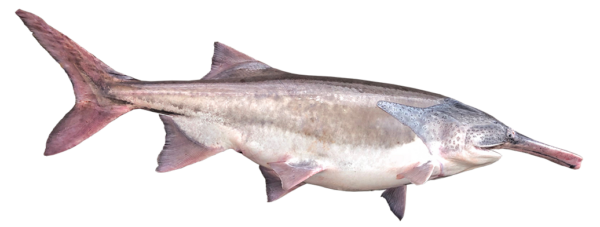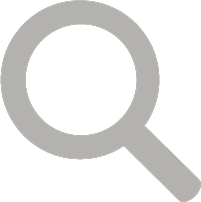A Paddlefish caught incidentally by an angler in Tennessee, where angling for Paddlefish is currently legal. Photo by ©Zach Adkins
A Paddlefish caught incidentally by an angler in Tennessee, where angling for Paddlefish is currently legal. Photo by ©Zach Adkins
Fact File
Scientific Name: Polyodon spathula
Classification: Fish, Order Acipenseriformes, Family Polyodontidae
Conservation Status:
- State Threatened in Virginia
- SGCN Tier IVc: The Virginia 2015 Wildlife Action Plan lists American Paddlefish as a Species of Greatest Conservation Need (SGCN) in Tier IV, with a conservation opportunity ranking of "c"
Size: Paddlefish can grow to nearly 7 feet in length and weigh nearly 200 pounds
Life Span: Paddlefish have been documented to live for more than 50 years
Distribution
Although the Paddlefish is native to the lower Clinch and Powell Rivers of the Upper Tennessee River Basin, observations in Virginia are extremely rare.

Identifying Characteristics

Profile view of a Paddlefish. Photo by ©Zach Adkins
- Large head, with a long spatulate snout that is covered with patches of pit sensory organs
- A large ventral mouth
- Small mouth barbels
- A broad, largely unscaled body
Polyodontidae Characteristics and Anatomical Terms


Illustrations by ©Makayla DeVivo – DWR
Habitat
Paddlefish inhabit large, deep rivers with slow to moderate currents. They prefer open water and require gravel shoals that are exposed and unentrenched.
Diet
Paddlefish are indiscriminate planktivores. They feed by keeping their lower jaw open and using their gill rakers to trap insects and plankton. Due to their feeding strategies, they are sometimes incidentally caught by anglers targeting other species of fish.
Reproduction
Paddlefish reproduce between March and June in Virginia by spawning over clean gravels in moderate currents. A single female can disperse upwards of one million eggs, which are greenish in color. Paddlefish eggs are adhesive, and stick to the gravels for about two weeks before they hatch.
Special Considerations
It is illegal to target Paddlefish by angling. The Paddlefish is listed as a threatened species under Virginia law. It is a violation of state law to harass, harm, or take any Paddlefish.
For the definitions of take, harass, and harm, see 4 VAC 15-20-140.
Last updated: August 5, 2025
The Virginia Department of Wildlife Resources Species Profile Database serves as a repository of information for Virginia’s fish and wildlife species. The database is managed and curated by the Wildlife Information and Environmental Services (WIES) program. Species profile data, distribution information, and photography is generated by the Virginia Department of Wildlife Resources, State and Federal agencies, Collection Permittees, and other trusted partners. This product is not suitable for legal, engineering, or surveying use. The Virginia Department of Wildlife Resources does not accept responsibility for any missing data, inaccuracies, or other errors which may exist. In accordance with the terms of service for this product, you agree to this disclaimer.

